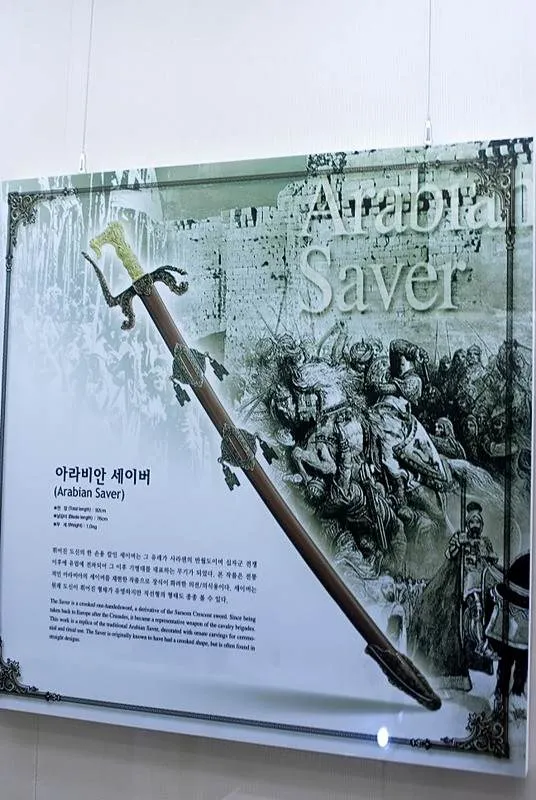
It’s happened to every traveler — a place starts off sounding intriguing, but upon arriving seems more ‘meh’ then ‘hey, cool!’. The Gwangyang Ornamental Knife Museum (광양장도박물관) was one of those places for me — an interesting facet of Korean history, dulled somewhat by the lack of English explanation and few stories worth telling. It ended up being worth the visit, but for other reasons.

The real deal here — dating back to the Joseon Dynasty (15th-19th century).
A jangdo (장도) is a small, ornamental knife worn by women (and sometimes men) during the Goryeo and Joseon Dynasties (10th to 14th, and 14th to 19th centuries, respectively). Also called eunjangdo (은장도, the 은 or ‘eun’ meaning silver), in 1498, King Yeonsangun decreed that common people could not wear eunjangdo; in 1670, a law penalized common people for using the fancier metals — the gold and silver versions were indicators of the Joseon Dynasty hierarchy, after all. Size, shape, and decorative aspects were different in many cases — and good thing, too, as a museum of identical-looking knives would be pretty darn boring.
These knives were always engraved with the hanja (Chinese characters) that meant ‘one heart’ — in other words, the jangdo’s owner would never have a change of heart for as long as they lived. It was a promise to remain faithful to one’s beliefs or one’s spouse. The knife was typically carried on a coat string or belt, and could also be carried in a pocket. I have a hard time believing this, but a woman was expected to commit suicide to ‘protect’ their virginity, as opposed to using the knife to defend themselves. The florid brochure available at the front desk describes these as “extreme circumstances”, however, and that the knife was “highly useful for everyday purposes”.
In any case, the museum has hundreds of them on display — some as small as 10 cm in length, but were typically between 15–20 cm.

Also on display are a number of swords and knives from other countries (above, an Italian hunting knife). This is where a couple of unfortunate Konglish errors make their way into hilariousness:

The Arabian saver, anyone? Not pictured nearby is a version of history that sees Julius Caesar “assassinated by elements within the Republican Party”.

Pen , meet sword — er, calligraphy brush, meet jangdo (it’s called a 붓장도 — boot-jang-do)

A good part of the museum is dedicated to the holder of Important Intangible Cultural Heritage number 60, Bak Jong-gun (박종군). Born in 1931, he’s passed on the legacy of the art form to plenty of pupils.
It’s no coincidence, of course — he’s also the museum’s director. If you’re looking to add a jangdo to your collection, however, bring a fat wallet. At a minimum, the souvenir store’s selection of knives started around 100,000 won (100 USD) and got pricier for the framed versions.
It’s quirky, has just enough English around, and is reasonably easy to reach. Check it out the next time you’re in Jeollanam-do.
Name: Gwangyang Ornamental Knife Museum (광양장도박물관)
Address: Jeollanam-do Gwangyang-si Gwangyang-eup Chilseong-ri 1009–3
Korean address: 전라남도 광양시 광양읍 칠성리 1009–3
Directions: Get to Gwangyang train station. From the exit, walk left about 100 meters, then cross the street and head down the side street on the right side of the street. Jump on bus 2, and get off at the 광양여고 (Gwang-yang-yeo-go, or Gwangyang Girl’s High School) bus stop. It’ll stop just after turning right; double back to the main road and walk 200 meters.
If traveling via bus, get to Gwangyang Bus Terminal. Exit, then turn left and head to the bus stop. Hop on frequent bus 77 and ride for about 10–15 minutes to the Gwangyang Girls High School (광양여고). Once off the bus (with your back to the road), head left towards the pedestrian overpass. Turn right down the side road, and walk 150 meters to the museum on your right.
Hours: 9:30am-6pm
Admission: free
Phone: 061–762–4853
Website: http://www.jangdo.org


